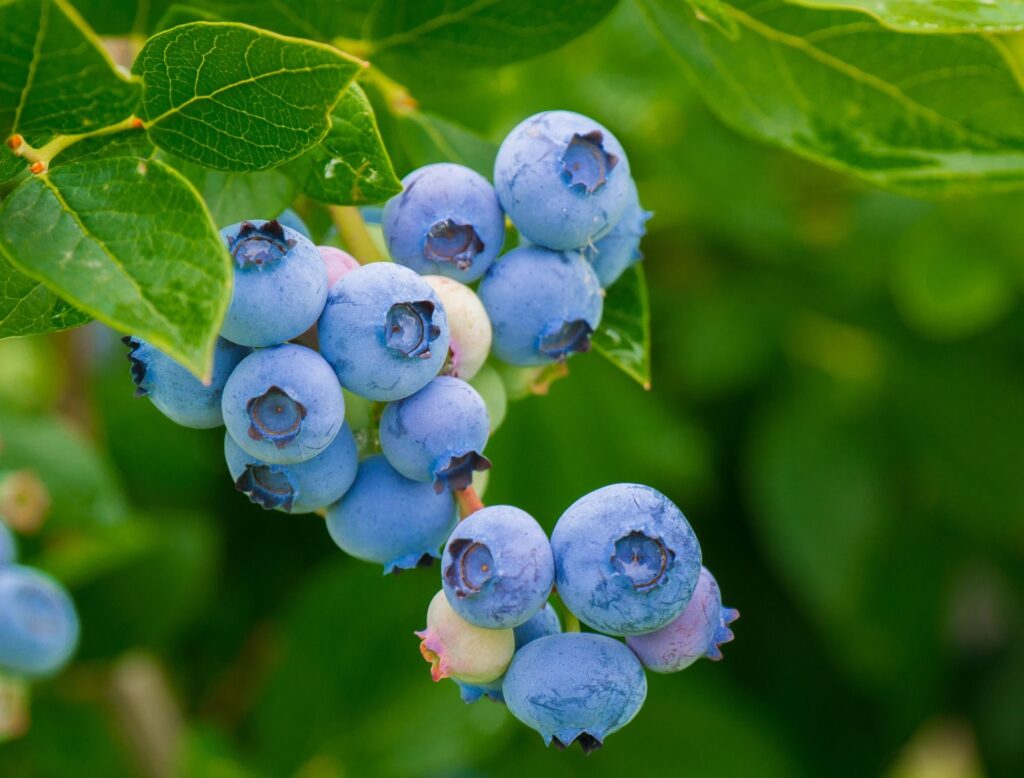Growing Blueberries
By Shauna Dobbie
They are delicious and nutritious, being full of anthocyanins (which are good for you). They’re also native to Canada, so why are blueberries so hard to grow in the garden?
There are a few reasons, but with some care you can provide a spot your blueberries will be happy in.
First, think about how blueberries grow in the wild. They are one of the first plants to grow after a forest fire, so they don’t care for competition. They seem to prefer being killed above ground from time to time by forest fires or bears rolling around in the crop and crushing them; their rhizomes increase underground in response. Modern commercial growers will simulate these conditions by mowing them low to the ground or burning them, and Indigenous North Americans used to burn the crop sometimes to encourage more berries to grow.

The main problem faced by gardeners in growing blueberries is the pH of their soil. Most garden plants like a slightly acidic soil to a slightly alkaline soil, or a pH between 6.5 and 7.5 (7 is neutral). Blueberries prefer to grow in an acidic soil with a pH of 4 to 5.5. The issue of soil pH is important; plants cannot take up nutrients, or take up more than they can use, if it is out of whack.
There’s a good chance your garden soil is outside the range that blueberries prefer. If you want to grow them in the ground, you’ll need to change that. And you can, but it takes time.
For a very, very small change, you can mix peat moss into your planting soil; aim for about half peat, half regular soil. Adding pine needles won’t do anything to the pH. For a larger change, you’ll need to use sulphur, mixing it in several months in advance, then testing the soil pH. (See sidebar.)
There are high-bush and low-bush blueberries, and breeders have mixed the two to come up with half-high blueberries. You won’t find high-bush in Western Canada because they’re hardy only to Zone 5, and that’s just as well because, though the berries are bigger, they aren’t as flavourful. You can grow them in southern Ontario if you like. Low-bush blueberries are the sort native to Canada. There are a couple of species. One is Vaccinium myrtilloides, which grows in all 10 provinces, Nunavut and the Northwest Territories. The other is Vaccinium angustifolium, which grows from Manitoba to Labrador. The two hybridize freely.
A few low-bush cultivars have been developed for the market. These include ‘Brunswick’, ‘Burgundy’, ‘Blomidon’ and ‘Chignecto’.
For half-high cultivars, look for anything with ‘North’ in the name: ‘Northland’, ‘Northsky’, ‘Northblue’ and ‘North Country’. These are the hardiest.
Once you have all your ducks in a row… your soil acidic and your plants attained… you have another challenge, which is to pick off the blossoms of the berries for the first two years, to encourage the energy to go into the roots rather than the fruit. You’d only get about 10 berries the first year and a couple of dozen the next anyhow. So pick off the blossoms and dream about making blueberry pancakes, blueberry pie, blueberry cobbler or whatever your blueberry fantasies involve, in the future.




